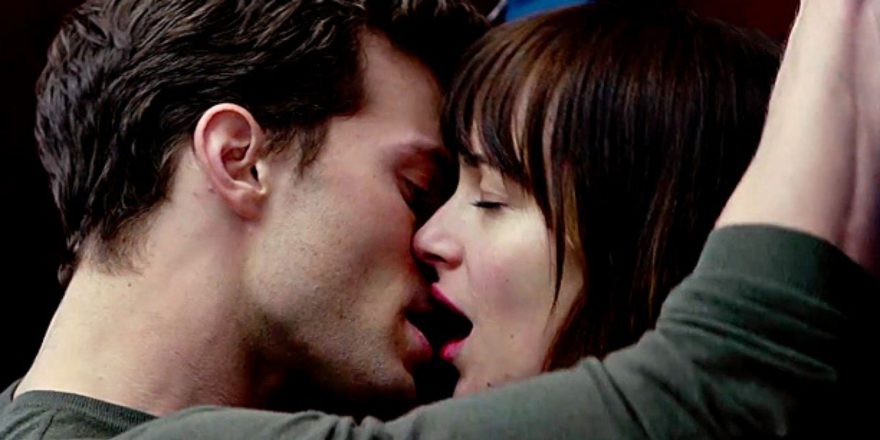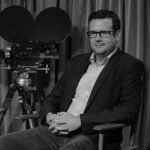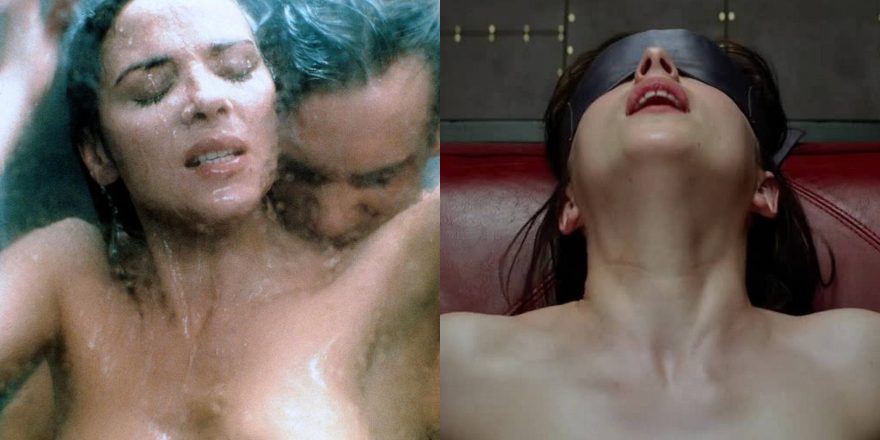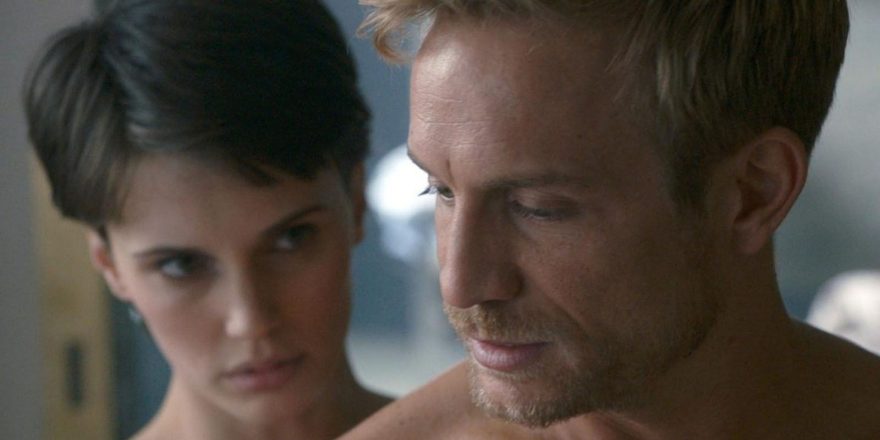James Foley likes sex. A lot. At least he likes putting it on screen, which makes him a bit of an exception among male Hollywood directors, the majority of whom seem more comfortable with violence – or, at the very least, with placing their depictions of sex in close proximity to depictions of violence (De Palma, Verhoeven). Foley’s done that too when the genre decreed it – in the erotic thrillers Fear and Perfect Stranger, or the film noir After Dark, My Sweet – but more often than not he takes a graphic yet playful attitude toward sex that’s unique in mainstream American cinema. He treats sex the way Vincente Minnelli used musical numbers, or how John Woo employs shootouts: as something that’s aesthetically pleasing for its own sake, but which also moves the plot forward and expresses something fundamental about the characters and their relationships. It’s been a constant in his work, from his debut feature Reckless in 1984 to his latest film, the fearless and deliriously entertaining Fifty Shades Freed.
To audiences who know Foley only from Glengarry Glen Ross and At Close Range – his most critically lauded but most strictly male-oriented and sexless films (I’ll leave it to others to speculate on that connection) – his taking over the reigns of the Fifty Shades franchise for its second and third installments might have seemed strange, or even sad: a once great artist stooping to a crass commercial assignment to stay in the game. For me as a Foley enthusiast, however, the news that he would be assuming the director’s chair for last year’s Fifty Shades Darker felt both surprising and inevitable – if ever there was a perfect match of studio assignment and idiosyncratic auteur, this was it. After all, in Reckless Foley transformed a routine bad boy-good girl romance into something much more interesting and complex simply by taking the sex that studios were using as a tacky marketing tool for most teen films of the era and using it as a way of conveying Aidan Quinn and Daryl Hannah’s characters’ insecurities, ambitions, tenderness, and yes, recklessness.
In the case of the Fifty Shades series, Foley inherited the material from the very capable Sam Taylor-Johnson, who directed Fifty Shades of Grey before parting ways with the franchise over creative differences with author E.L. James. I haven’t read the novels upon which the Fifty Shades movies are based, so I don’t know how faithful the films are and can’t speak to the appeal (or lack of appeal) of the books, but I have a few theories about why the movies work for those of us who like them. Part of the fun is, I must guiltily admit, the consumer porn aspect of the movies – because the two lovers at the center of the films have unlimited resources, they spend most of their time jetting from one luxurious setting to another, looking unbearably gorgeous against gorgeous landscapes. Hiring James Foley to direct this kind of material was an astute move on the Fifty Shades producers’ part – clearly they were aware of one of the major strengths of his previous work, his exceptionally vivid sense of place. I know that to some degree all great directors make the most of their characters’ surroundings, but Foley has always been particularly gifted in this regard; the barren and beautiful rural Tennessee locations of At Close Range, the California desert of After Dark, My Sweet, and the suburban Seattle of Fear all both illustrate and deepen their characters’ internal tensions. Settings are never mere backdrops for Foley, and this is as true of his Fifty Shades films as his earlier pictures – he infuses the postcard imagery with, depending on the demands of any given scene, romance, eroticism, and menace, while still delivering the superficial satisfactions of watching pretty people doing pretty things in pretty places. It’s a little like seeing an episode of The Bachelor directed by a great artist.
It also gets at something interesting about Foley, which is the way that style is substance in his movies. This isn’t the same as style taking the place of substance; rather, it’s that Foley largely eschews literary modes of expression in favor of purely cinematic ones. Meaning and character are conveyed by point of view and reaction shots, by a controlled, constantly tracking camera that creates the same kind of increasing tension and anticipation in the audience that’s building between the characters. It sounds like a basic thing, but Foley has an unerring instinct for knowing when to cut to close-ups – he never does it arbitrarily, turning what most directors treat as mere coverage into a central component of his visual grammar. Foley’s total control of his craft – I’ve always found it appropriate that one of his best films is titled Confidence, since he has as much of it as any working filmmaker – is part of what makes his sex scenes so pleasurable to watch. His mastery of the frame exerts its own kind of sexual power on the audience, and the precision of his visual technique intersects beautifully with the spontaneity and audacity of the performances to yield potent visceral effects. The actors in Foley’s sex scenes always seem to be really going for it, even in the way they’re directed to kiss; in most films, there’s this kind of fake stage kissing that goes on, but in a Foley film such as Reckless or Fear or Perfect Stranger, the actors look like they’re practically going to devour each other. In Fifty Shades Darker and Fifty Shades Freed, the actors (Jamie Dornan and Dakota Johnson) are looser than they were in the first movie, part of which can be attributed to the natural progression of the storyline, but most of which has to do with the courage Foley always seems to inspire in his actors – the courage to be unafraid of going over the top, to embrace the melodrama and even goofiness of the text.
Foley mirrors this boldness in his imagery, which is unabashedly hot compared to the cooler technique of Taylor-Johnson’s film, in which the characters seemed pinned down like bugs under a microscope by the architectural symmetry of their surroundings. It was probably a lucky break for Foley that he didn’t direct the first movie, which was more about repression (and oppression) than release and liberation, and thus suggested a more restrained and chilly strategy than comes naturally to him. Where Taylor-Johnson’s palette is largely blues and grays and blacks, Foley goes for warmer, more passionate colors, and not just in the red room where the protagonists engage in their softcore S&M games. Although the film is filled with self-aware lines and references, there’s no ironic distance in the visual design – the images come at you in a feverish rush, just like the characters’ emotions.
It’s this fevered quality that I think gets Foley into trouble sometimes with critics and “serious” film people, at least when he deals with sex. They don’t have any problem with his heated approach to the macho histrionics of Glengarry Glen Ross, nor with the fact that the characters in that film are simultaneously empathetic, tragic, ridiculous and awful. Now, I realize that there’s a significant difference in literary quality between source material written by David Mamet and the novels of E.L. James, but why do people assume Foley knows exactly what he’s doing when he manufactures complicated emotional responses in Glengarry but somehow isn’t in on the joke in Fear or Perfect Stranger or Fifty Shades Freed when he’s doing something similar? The greatness in Foley’s approach to sex is the same as his greatness in his approach to everything else, which is that he portrays its utter seriousness to the participants while allowing the viewer a range of contradictory responses. I don’t want to overstate my case for Fifty Shades Freed, which is less a provocation or thoughtful exploration than it is a piece of cinematic cotton candy. But it’s smart, funny, and elegant, and directed with commitment and taste – and taken together, it and Fifty Shades Darker mark a welcome return to studio filmmaking for one of its finest practitioners.






